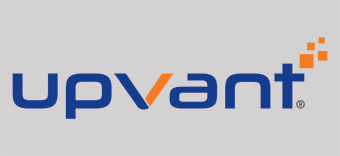Protect your business from a Cyber Security attack

Businesses face an evolving set of potential threats due to data security breaches and downtime from unexpected events.
We have put together 17 steps CEO’s can do to protect their small to medium sized business from a Cybersecurity attack. These steps could be implemented in the next 30 days.
Turn on firewall security for your Internet connection
A firewall is a set of related programs that prevent outsiders from accessing data on a private network. Make sure the operating system’s firewall is enabled or install free firewall software available online. If employees work from home, ensure that their home system(s) are protected by a firewall. Never turn off your computer’s firewall – even for a minute.
Back up your data
Perform daily (automatic if possible) backups of important business data and information and store copies either offsite or in the cloud. Critical data includes digital documents, spreadsheets, databases, financial files, human resources files, accounts receivable/payable files and Enterprise Resource Planning (ERP) applications.
Keep your computers and network clean
Keep your computers and network clean: Having the latest security software, web browser, and operating system are the best defenses against viruses, malware, and other online threats. Install antivirus software from a trusted source then run a scan after each update. Install other key software updates as soon as they are available.
Regularly update your applications and Operating System
Servers, computers and mobile devices have applications and software from many companies. You must keep these up to date.
Secure your Wi-Fi networks
If you have a Wi-Fi network for your corporate office or to run your Warehouse Management System (WMS), make sure it is secure, encrypted, and hidden. To hide your Wi-Fi network, set up your wireless access point or router so it does not broadcast the network name, known as the Service Set Identifier (SSID). Password protect access to the router.
Secure Printers connected to your network
These include Multifunction (MFP), Radio Frequency Identification (RFID) and Pallet/Label Printers. These printers are really computers that are connected to your corporate network. They pose a real security threat as they store copies of faxes, scanned and printed documents like invoices, bill of ladings and contracts. If not properly managed, they can expose sensitive business data to unauthorized access and misuse. Don’t expose these printers to the public internet (outside your network) and change the default password.
Create a mobile device action plan
Mobile devices include Wi-Fi enabled barcode scanners, mobile card readers, printers and tablets. These mobile devices can create significant security and management challenges, especially if they hold confidential information or can access the corporate network. Require users to password protect their devices, encrypt their data, and install security apps to prevent criminals from stealing information while the phone is on public networks. Be sure to set reporting procedures for lost or stolen equipment.
Control physical access to your data center, server room and computers
Prevent access or use of business computers by unauthorized individuals. Laptops and mobile devices can be particularly easy targets for theft or can be lost, so lock them up when unattended.
Establish basic security practices and policies for employees
Require employees to use unique strong passwords and change passwords every three months. Establish an Acceptable Use Policy with internet guidelines and detail penalties for violating company cybersecurity policies. Establish rules of behavior describing how to handle and protect customer information and other vital data.
Create user accounts for each employee
Make sure a separate user account is created for each employee including temporary warehouse staff and require strong passwords. Administrative privileges should only be given to trusted IT staff and key personnel.
Employ best practices on payment credit cards
Work with banks or processors to ensure the most trusted and validated tools and anti-fraud services are being used. You may also have additional security obligations pursuant to agreements with your bank or processor. Isolate payment systems from other, less secure programs and don’t use the same computer to process payments and surf the Internet.
Secure your customers private data
If your website asks customers for sensitive information like credit card numbers, usernames, passwords – the reputation of your business depends on protecting every detail. Install an SSL certificate which uses advanced encryption to prevent hackers from reading any data that passes to or from your site.
Limit employee access to data and systems required to do their job
Do not provide any one employee with access to all data systems. Employees should only be given access to the specific data systems that they need for their jobs, and should not be able to install any software without permission.
Implement multi-factor authentication
This requires additional information beyond a password to gain entry to your network or systems. Check with your vendors that handle sensitive data, especially financial institutions, to see if they offer multi-factor authentication for your account.
Perform a phishing test
A baseline phishing test determines your companies phish-prone percentage. Find out who is vulnerable to phishing by using software from a trusted source.
Provide security awareness training for all employees
Employees are your last line of defense. Hackers are constantly finding ways to get through spam filters, firewalls, or antivirus so prepare your users to better defend your organization against cyber-attacks.
Conduct ongoing phishing campaigns
These campaigns allow your users to practice the skills they’ve learned in their security awareness training.
Cyber Security Assessment
Get the complete picture for your business with a custom Cyber Security Assessment provided by Upvant™.
- Identify your Risks and
- Determine your Cyber Security Maturity
The Assessment is done by a certified Cyber Security IT Professional using industry accepted cyber security practices.
Some of the content in this article is taken from the FCC’s Cybersecurity Tip Sheet


